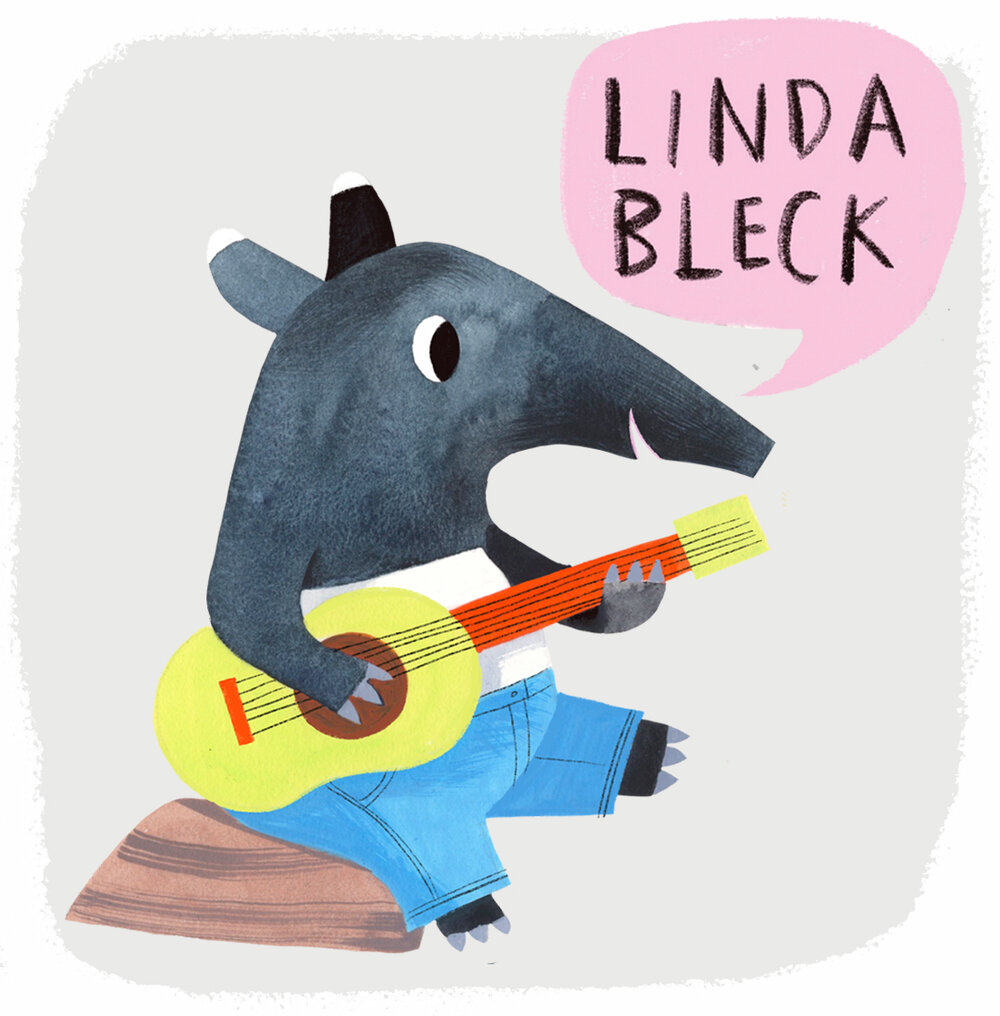Shortly after my husband and I closed the deal on our new farm, we saw an Instagram post from our friend, artist Linda Bleck. She had just completed an illustrative map of Whitnall Park in Milwaukee, Wisconsin, as part of the Milwaukee County “Parks for Good” fundraiser. My husband was intrigued. To him, Linda’s map looked vintage, like an illustration in a third grade social studies book. He loved the feel of nostalgia her map conveyed.
To his giant to-do list for the farm, which included “check chicken butts” he added: “commission Linda Bleck to draw farm map”.
Linda readily agreed. She carted her drawing pad, her doggie, and a stool out to our place and began sketching out the farmhouse. She snapped pics of the gardens and trees. We took a measurement of the kitchen wall where I planned to hang the finished map. Then Linda ordered the paper.
Together, we decided that the map should be monochromatic. Looking at the big red barn, Linda thought red would be nice, but didn’t mind when I suggested green. She knew she would be working with lights and darks.
A few weeks went by. Linda called me and said she wasn’t happy with the map. Something about the perspective didn’t feel right to her. She was thinking about starting over.
“Can I see?” I asked.
She came out with her doggie in tow and unrolled the paper. You can watch the video at the bottom. I was completely charmed by her work. “Keep going!” I said.
When Linda was a senior in high school, she worked in her father’s architecture office as a draftsman. She learned how to draw foundations and structures. She figured out how to play with architectural perspective. These are the lessons that Linda brought to bear on the farm map. I have included photos of the buildings so you can see her mastery of scale and her attention to detail.
It took Linda more than two months to complete the map. She said by the end, she was seeing trees in her dreams.
We agreed to leave the name of the farm for last, which was good since we DIDN’T HAVE ONE. The naming of this place turned out to be a challenge. The previous owners retained the rights to the old name, Monches Farm, and so we began from scratch — looking through old history books, soliciting ideas from the family, consulting the thesaurus.
I have a friend whose tiny Labradoodle is named Thunder. That’s what I wanted for our farm. Something tongue-in-cheek that befits a couple of greenhorns with wide eyes and soft hands. Something like "Cold Comfort Farm,” the name of the fixer-upper in Stella Gibbon’s novel. Or “Mudfog,” the name of the workhouse in “Oliver Twist.”
But there was no laughing about the beauty of the place. In the end, we knew the name must come from the terrain. The farm abuts the Kettle Moraine State Forest and skirts the Ice Age National Scenic Trail. The land and its features were sculpted by the glacier that covered this region more than 12,000 years ago. That glacier was named Laurentide.
The final map turned out much larger than any of us expected. Out of the kitchen and into the great room it went. Linda (below) stopped by a couple weeks ago to see the map in situ. She brought along her doggie, and her daughter, who is following her mother’s example and has landed a book deal before graduating college.
Linda has more than twenty children’s books to her credit. Notably, she was selected to illustrate a long forgotten manuscript by Margaret Wise Brown, which became “The Moon Shines Down.” She has also worked extensively in editorial. Follow her on Instagram and you will see the evidence of her rigorous daily practice. Not to give anything away but she’s into her fifties now. Which is why I found it interesting when she said that she is just now hitting her stride. Three cheers for that! No riding off into the sunset for her. She continues to push herself in new directions and with new projects. Does she inspire you too?
In the video below, she talks about the unpredictable process of painting with watercolor. Her lessons apply to life as well: “You just live with what you do. And then you move on.”
The map contains a couple of references to future plans, including an archway between the cornelian cherry trees and more than a few goats in the pasture. If you look carefully, you will see a couple of surprises too. There are snakes sunning themselves at the bridge by the river. Holy Hill, the cathedral just north of the farm, is visible on the horizon. And behind the chicken coop, half hidden by a large pine, kneels a woman with spectacles. That’s Linda, forever installed at Laurentide, spreading green watercolor on the canvas as she paints yet another type of tree.








